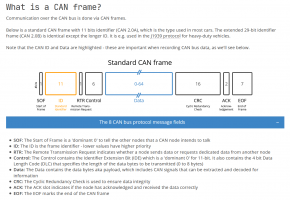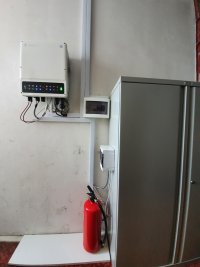Hi everyone,
I will share my experience with these new HV hybrid inverters and EV batteries working together as energy storage systems in this thread.
I've been planning to build a small PV system for a long time. A hybrid system with a big battery
I was looking for used EV batteries for some time and had a chance to get a battery from a Chevy Volt, the year 2013. My first plan was to use a 48V hybrid inverter, but a Chevy battery's reconfiguration is not an easy task. So I've decided to go with an HV hybrid inverter. These machines can work with batteries in the range of 100-450VDC, but there is limited battery selection. And communication protocols between the inverter and the battery are closed and proprietary. But I took the challenge, and after two months of mounting, wiring, coding, and hacking, I have a working system.
It’s based on Goodwe GW6000-EH with two modules from a Chevy battery (30S+24S with a nominal voltage of 202V). Cells monitoring is done via an original BMS (BICM modules). They are connected via CAN bus to an SBC (Raspberry Pi). There is a second CAN bus connected to the dedicated port of the inverter. A small program that runs on Raspberry translates the information from battery BMS in a format that the inverter can understand. That way, the inverter is happy and knows the most important parameters of the battery. (SOC, charge voltage and current, etc.). The SBC is overkill, but it makes debugging easier. I’m planning to replace it with a dedicated controller at a later stage (maybe SimpBMS).
The inverter has many configuration options, and I’m impressed by the build quality, but more on that later.
The project is still a WIP, and there are many things to improve. But I can say for sure that the system works as expected.
I want to thank the community for the valuable information found on the net regarding various aspects of the project.
 WARNING!
WARNING!
This project requires working with high voltages that are life-threatening! The same applies to any short circuits and arcing faults that may have occurred! You have to know and pay attention to the associated risks! Wear suitable personal protective equipment for all work on the battery system.
I don't recommend that project for beginners and people without experience with HV electrical systems.
P.S
Attached picture of the inverter

I will share my experience with these new HV hybrid inverters and EV batteries working together as energy storage systems in this thread.
I've been planning to build a small PV system for a long time. A hybrid system with a big battery
I was looking for used EV batteries for some time and had a chance to get a battery from a Chevy Volt, the year 2013. My first plan was to use a 48V hybrid inverter, but a Chevy battery's reconfiguration is not an easy task. So I've decided to go with an HV hybrid inverter. These machines can work with batteries in the range of 100-450VDC, but there is limited battery selection. And communication protocols between the inverter and the battery are closed and proprietary. But I took the challenge, and after two months of mounting, wiring, coding, and hacking, I have a working system.
It’s based on Goodwe GW6000-EH with two modules from a Chevy battery (30S+24S with a nominal voltage of 202V). Cells monitoring is done via an original BMS (BICM modules). They are connected via CAN bus to an SBC (Raspberry Pi). There is a second CAN bus connected to the dedicated port of the inverter. A small program that runs on Raspberry translates the information from battery BMS in a format that the inverter can understand. That way, the inverter is happy and knows the most important parameters of the battery. (SOC, charge voltage and current, etc.). The SBC is overkill, but it makes debugging easier. I’m planning to replace it with a dedicated controller at a later stage (maybe SimpBMS).
The inverter has many configuration options, and I’m impressed by the build quality, but more on that later.
The project is still a WIP, and there are many things to improve. But I can say for sure that the system works as expected.
I want to thank the community for the valuable information found on the net regarding various aspects of the project.
 WARNING!
WARNING!This project requires working with high voltages that are life-threatening! The same applies to any short circuits and arcing faults that may have occurred! You have to know and pay attention to the associated risks! Wear suitable personal protective equipment for all work on the battery system.
I don't recommend that project for beginners and people without experience with HV electrical systems.
P.S
Attached picture of the inverter

Last edited:










